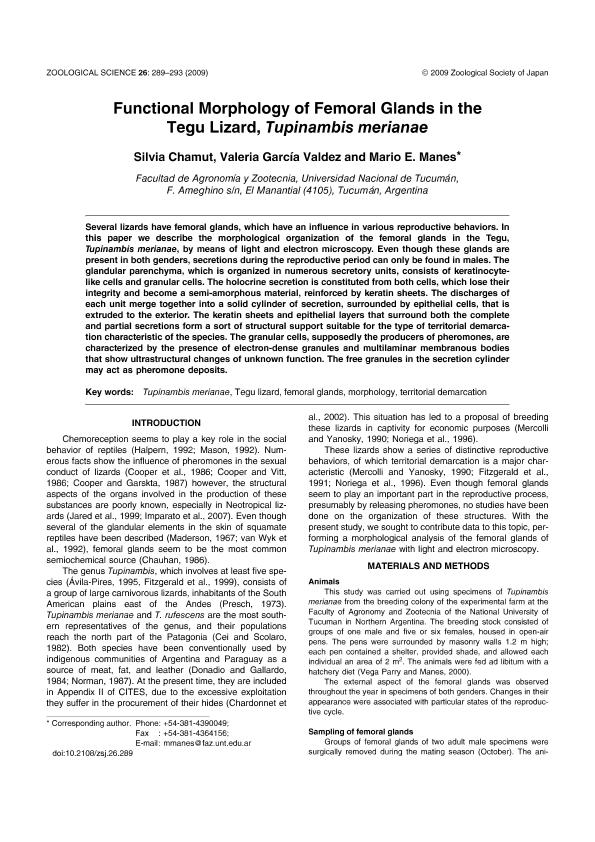Artículo
Functional morphology of femoral glands in the tegu lizard Tupinambis merianae
Fecha de publicación:
12/2009
Editorial:
Zoological Society of Japan
Revista:
Zoological Science
ISSN:
0289-0003
Idioma:
Inglés
Tipo de recurso:
Artículo publicado
Clasificación temática:
Resumen
Several lizards have femoral glands, which have an influence in various reproductive behaviors. In this paper we describe the morphological organization of the femoral glands in the Tegu, Tupinambis merianae, by means of light and electron microscopy. Even though these glands are present in both genders, secretions during the reproductive period can only be found in males. The glandular parenchyma, which is organized in numerous secretory units, consists of keratinocyte-like cells and granular cells. The holocrine secretion is constituted from both cells, which lose their integrity and become a semi-amorphous material, reinforced by keratin sheets. The discharges of each unit merge together into a solid cylinder of secretion, surrounded by epithelial cells, that is extruded to the exterior. The keratin sheets and epithelial layers that surround both the complete and partial secretions form a sort of structural support suitable for the type of territorial demarcation characteristic of the species. The granular cells, supposedly the producers of pheromones, are characterized by the presence of electron-dense granules and multilaminar membranous bodies that show ultrastructural changes of unknown function. The free granules in the secretion cylinder may act as pheromone deposits.
Palabras clave:
Tupinambis Merianae
,
Tegu Lizard
,
Femoral Glands
,
Morphology
Archivos asociados
Licencia
Identificadores
Colecciones
Articulos(CCT - NOA SUR)
Articulos de CTRO.CIENTIFICO TECNOL.CONICET - NOA SUR
Articulos de CTRO.CIENTIFICO TECNOL.CONICET - NOA SUR
Citación
Chamut, Silvia Nora; Garcia Valdez, Maria Valeria; Manes, Mario Enrique; Functional morphology of femoral glands in the tegu lizard Tupinambis merianae; Zoological Society of Japan; Zoological Science; 26; 12-2009; 289-293
Compartir
Altmétricas




